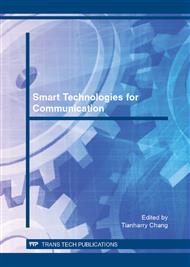[1]
Hesselbarth H W, Gobel I R. Simulation of Recrystallization by Cellular Automata[J]. Acta Metallurgica et Materialia. 1991, 39 (9): 2135-2143.
DOI: 10.1016/0956-7151(91)90183-2
Google Scholar
[2]
Pezzee C F, Dunand D C. The Impingement Effect of an Inert Immobile Second Phase on he Recrystallization of a Matrix[J]. Acta Metallurgical et Materialia. 1994, 42 (5): 1509-1524.
DOI: 10.1016/0956-7151(94)90361-1
Google Scholar
[3]
Davies C H J. The Effect of Neighbourhood on The Kinetics of a Cellular Automaton Recrystallisation Model[J]. Scripta Metallurgical et Materialia. 1995, 33 (7): 1139-1143.
DOI: 10.1016/0956-716x(95)00335-s
Google Scholar
[4]
Davies C H J. Growth of Nuclei in a Cellular Automaton Simulation of Recrystallisation[J]. Scripta Materialia. 1997, 36 (1): 35-40.
DOI: 10.1016/s1359-6462(96)00331-4
Google Scholar
[5]
Davies C H J, Hong L. The Cellular Automaton Simulation of Static Recrystallisation in Cold-Rolled AA1050[J]. Scripta Materialia. 1999, 40 (10): 1145-1150.
DOI: 10.1016/s1359-6462(99)00021-4
Google Scholar
[6]
Goetz R L , Seetharaman V. Static Recrystallization Kinetics with Homogeneous and Heterogeneous Nucleation Using a Cellular Automata Model[J]. Metallurgical and MaterialsTransactions. 1998, 29A: 2307-2321.
DOI: 10.1007/s11661-998-0108-z
Google Scholar
[7]
Marx V, Reher F R, Gottstein G. Simulation of Primary Recrystallization Using a Modified Three- Dimensional Cellular Automaton[J]. Acta Materialia. 1999, 47 (4): 1219-1230.
DOI: 10.1016/s1359-6454(98)00421-2
Google Scholar
[8]
Gottstein G, Marx V, Sebald R. Integral recrystallization modeling[J]. Journal of Shanghai Jiaotong University. 2000, 5(1): 49~57.
Google Scholar
[9]
Gottstein G, Marx V, Sebald R. Integral recrystallization modeling: from cellular automata to finite element analysis[A]. The fouth International Conference on Recrystallization and Related Phnomena. Edited by Sakai T and Suzuki H G. The Japan Institute of Metals, Japan, 1999: 15~24.
Google Scholar
[10]
Raabe D. Introduction of a Three-Dimensional Cellular Automaton with a Probabilistic Switching Rule for the Discrete Mesoscale Simulation of Recrystallization Phenomena[J]. Phil. Mag. 1999, 79 (10): 2339-2358.
DOI: 10.1080/01418619908214288
Google Scholar


